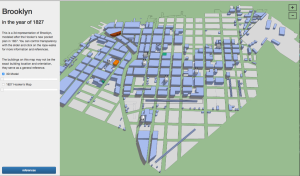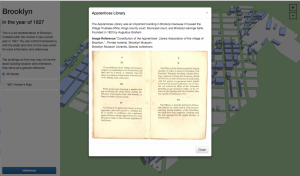Link to shared files: https://github.com/coderhub/Brooklyn_1827
Created By: Carlos Merced
Date: May 25, 2016
Title: Brooklyn in the year of 1827
** Works in Firefox and Google Chrome updated browsers **
This 3d model of Brooklyn shows the land occupied or sold in 1827, along with rope walks and other building data. The blue represents occupied space and the tan color represents undeveloped or unsold land plots.





